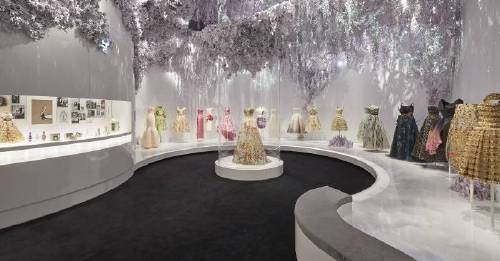Question: How often do you think about your clothes? Not as components for future outfits or stuff you have to drop off at the dry cleaner, but as objects with their very own histories, identities, and messages to transmit?
If your answer is rarely, then prepare to have your mind blown by “Items: Is Fashion Modern? ”. This is the first fashion exhibition to be shown at New York’s Museum of Modern Art since 1945, and it will be on display from October1, 2017 to January 28, 2018.
While most exhibitions of this kind focus on haute couture and the output of supremely influential, avant-garde designers, this one simply presents the best, most interesting examples of items you probably have in your own closet. And in so doing, it has the potential to revolutionize the way we think about what we put on our bodies.
Curators Michelle Millar and Paola Antonelli cataloged 111 types of clothing, from little black dresses to Breton tops. In addition to tracing the design origins of such garments (the two walls of LBDs, for example, very aptly begin with Chanel and end with Rick Owens), they also provide little-known cultural context for them. Did you know Diane von Furstenberg’s iconic wrap dress is a sartorial descendant of the sari? Yeah, me neither.

But I’ll never see them the same way again. Also, by placing certain items in close proximity to one another, the curators establish aesthetic connections between seemingly disparate fashion phenomena, like a Snugli and an oversized Louis Vuitton fanny pack. It takes a keen eye to notice the similarity, but once you get it, it’s too perfect to un-see.

There are also Doc Martens and Adidas, balaclavas and berets, kippahs and keffiyehs, a very patched-up pair of vintage Levi’s 501s that wouldn’t look at all out of place on a contemporary Instagram model, and a series of shift dresses that begin with Lilly Pulitzer and end with Stella McCartney, but not before making room for a paper version of the dress with Bob Dylan’s face on it. Why? Because it was the ‘60s, of course.
But novelty items like this also serve as a reminder that fashion both influences and is influenced by popular culture, and that the fashion world is not without a sense of humor. Perhaps the best example of this in the exhibition is a series of handbags by Mary Ping, designer of the now-defunct early aughts cult label Slow and Steady Wins the Race. These bags, all rendered in minimalist brown leather, mimic “it bags” by the likes of Chanel, Balenciaga, and Gucci, but reduced to the bare essentials as a statement about the fetishization of exclusivity. Right next door sits an original Birkin bag from the ‘80s.

But what, you may be wondering, is the point of all this, aside from drawing amusing connections between designer fanny packs and vehicles for infant transportation? Well, fashion, particularly the fashion of the people, provides a unique window into our shared history.
From the space-y ‘60s relics of what we thought we all might dress like in the “future” to Donna Karan’s “seven easy pieces” collection, dedicated to the ‘80s career woman who paved the way for today’s ambitious third-wave feminists, clothes tell us both where we’re going and where we’ve been. And this is an exhibition that, thankfully, isn’t afraid to get political with this history: There’s a fur coat on loan from PETA, a whole section about modest dress that features a birkini, and a Colin Kaepernick jersey.
But the biggest takeaway, I think, is that fashion is how we show people who we are. And since we rarely get a chance to really tell them, that’s huge. Whether it’s wearing modest dress and hijab to show religious devotion or a leather jacket to signal toughness, clothing is armor, explanation, and art all wrapped into one. And the more we consider the origins and associations of our clothes, the more control we have over it all.


